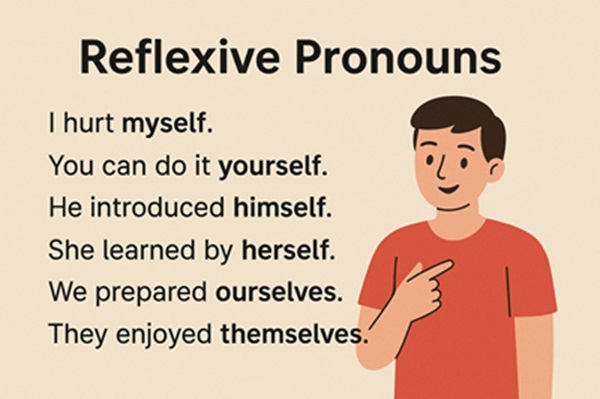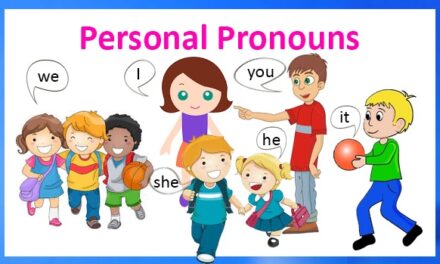Reflexive pronouns are special pronouns that end in “-self” (singular) or “-selves” (plural). They are used when the subject of the sentence (the person or thing doing the action) is the same as the object (the person or thing receiving the action).
The reflexive pronouns in English are:
– Singular: myself, yourself, himself, herself, itself
– Plural: ourselves, yourselves, themselves
When to Use Reflexive Pronouns
Rule 1: When the Subject and Object Are the Same
Use reflexive pronouns when the person/thing doing the action is also receiving the action.
– Example: Sarah taught herself to play the guitar.
(Sarah is both teaching and learning)
– Example: The cat licked itself clean.
(The cat is both licking and being licked)
Rule 2: For Emphasis
Reflexive pronouns can be used to emphasize who did something.
– Example: I made this cake myself!
(Emphasizing that I made it, not someone else)
– Example: The president himself attended the ceremony.
(Emphasizing that it was actually the president)
Rule 3: In Certain Common Expressions
Some phrases commonly use reflexive pronouns:
– Help yourself (to some food)
– Make yourself at home
– Behave yourself
– Enjoy yourself
Common Mistakes to Avoid
Mistake 1: Using Reflexive Pronouns Instead of Personal Pronouns
Incorrect: John and myself went to the store.
Correct: John and I went to the store.
Mistake 2: Using Personal Pronouns Instead of Reflexive Pronouns
Incorrect: He hurt him while skating.
Correct: He hurt himself while skating.
Mistake 3: Using Reflexive Pronouns Alone
Incorrect: Please give it to myself.
Correct: Please give it to me.
Special Notes
- “Themself” vs. “Themselves”: While “themself” is sometimes used as a singular reflexive pronoun, “themselves” is still more commonly accepted in formal writing.
- Some verbs commonly used with reflexive pronouns:
– express (oneself)
– introduce (oneself)
– prepare (oneself)
– pride (oneself)

















